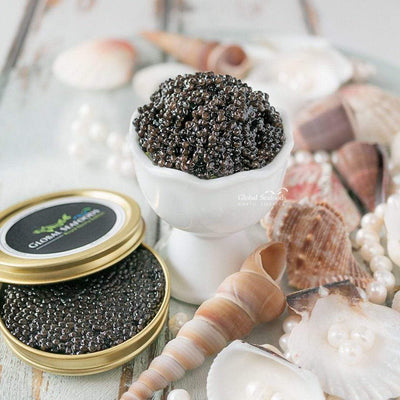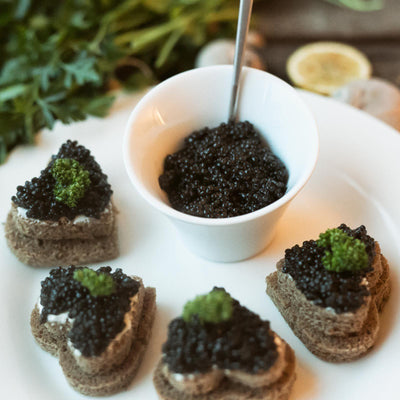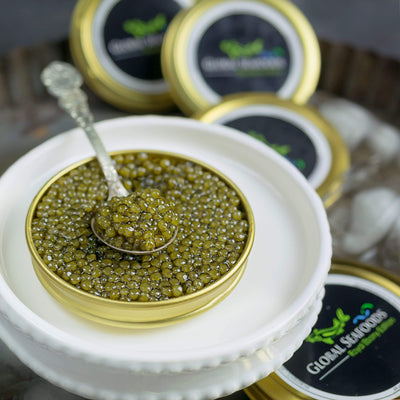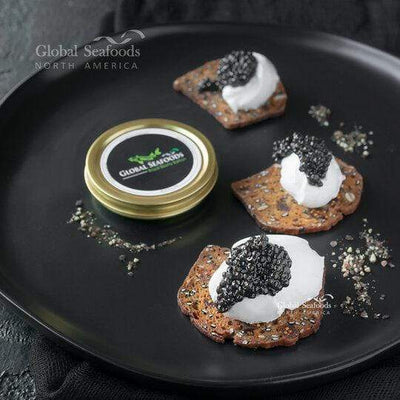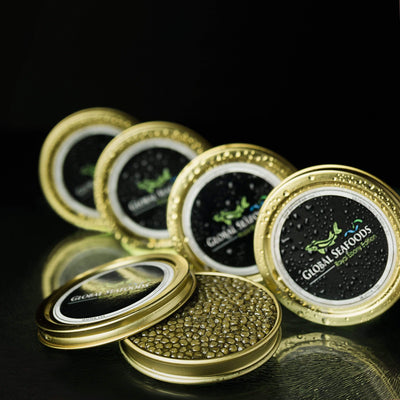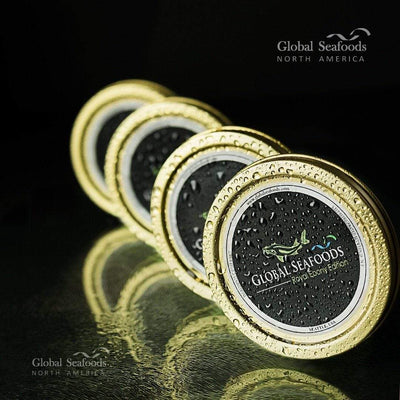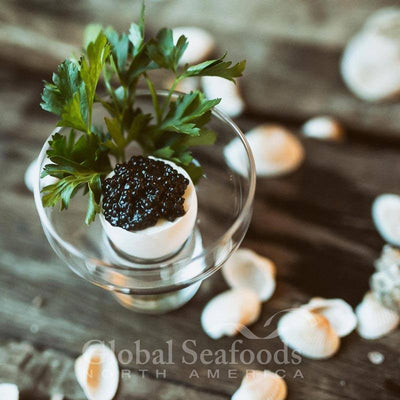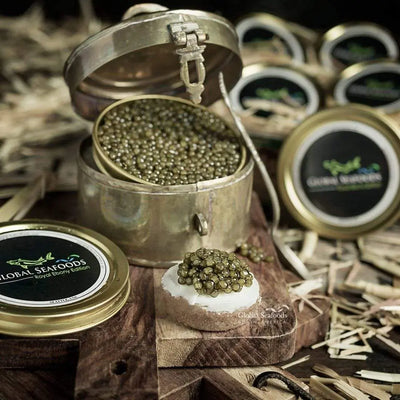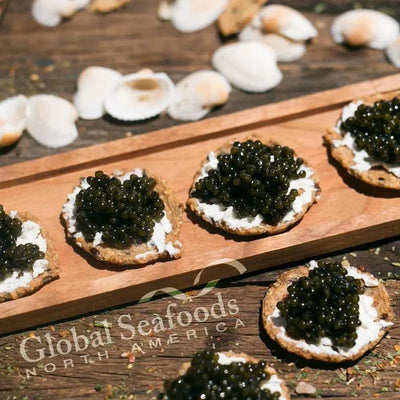The Fascinating World of Sturgeons: Giants of the Waterways

The Fascinating World of Sturgeons: Giants of the Waterways
The Ancient Giants of the Waterways
Sturgeons, often called the "living fossils" of the aquatic world, have been swimming in our rivers and oceans since the time of dinosaurs. These prehistoric fish are known for their enormous size, slow growth, and their most prized product—caviar. However, overfishing, habitat destruction, and the high demand for their roe have placed many sturgeon species on the brink of extinction.
In this article, we explore:
✔ The evolution and history of sturgeons 🦕
✔ Where to find wild and farmed sturgeons 🌍
✔ The crisis of overfishing and habitat loss ⚠️
✔ Ethical and sustainable alternatives for caviar lovers 🥄
✔ How you can help preserve these ancient giants for future generations 🌱
📌 Looking for premium sturgeon products? Shop Sturgeon Fillet & Caviar.
Ancestral Giants of the Aquatic Ecosystem
How Long Have Sturgeons Been Around?
✔ Sturgeons date back over 200 million years to the Triassic period.
✔ They have survived mass extinctions, including the one that wiped out the dinosaurs.
✔ Their body structure has barely changed—long, scaleless bodies with bony armor plates.
Unique Traits of Sturgeons
✔ Anadromous fish – They migrate from the ocean to freshwater rivers to spawn.
✔ Slow maturity – Some species take 10 to 20 years to reproduce.
✔ Can live over 100 years – Making them one of the longest-living fish species.
📌 Want to try sturgeon yourself? Order Fresh Sturgeon Fish.
Where to Find Wild Sturgeons in the United States
Best Locations for Wild Sturgeons
| Location | Sturgeon Species |
|---|---|
| Columbia River (WA, OR) | White Sturgeon |
| Sacramento River (CA) | White & Green Sturgeon |
| Hudson River (NY) | Atlantic Sturgeon |
| Delaware River (NJ, DE) | Atlantic Sturgeon |
| San Francisco Bay (CA) | Green & White Sturgeon |
| Chesapeake Bay (MD, VA) | Atlantic Sturgeon |
These rivers and estuaries serve as crucial habitats for sturgeon populations.
Types of Wild & Farmed Sturgeons
Wild Sturgeon Species in the U.S.
✔ White Sturgeon (Acipenser transmontanus) – Largest North American species
✔ Green Sturgeon (Acipenser medirostris) – Critically endangered
✔ Atlantic Sturgeon (Acipenser oxyrinchus oxyrinchus) – Overfished in the past
✔ Gulf Sturgeon (Acipenser oxyrinchus desotoi) – Found in the southeastern U.S.
Farmed Sturgeon Species in the U.S.
✔ White Sturgeon – Used for premium farmed caviar
✔ Siberian Sturgeon – Fast-growing & sustainable for aquaculture
✔ Russian Sturgeon – Known for high-quality Osetra caviar
📌 Looking for responsibly farmed sturgeon? Order Hot Smoked Sturgeon.
The Decline of Sturgeons: A Conservation Crisis
1. Overfishing & Illegal Caviar Trade
✔ Sturgeons are critically endangered due to the demand for their roe (caviar).
✔ Poaching & illegal fishing drive populations to near-extinction.
✔ The Beluga sturgeon, known for Beluga caviar, is one of the most at-risk species.
2. Habitat Destruction & Pollution
✔ Dams disrupt migration routes, preventing sturgeons from reaching their spawning grounds.
✔ Water pollution contaminates sturgeon habitats and food sources.
✔ River dredging & construction projects destroy nesting sites.
3. Climate Change
✔ Rising water temperatures impact spawning cycles.
✔ Changing river flow patterns affect food availability.
📌 Support sustainable seafood! Try Our Sturgeon Fillet.
Ethical & Sustainable Sturgeon Consumption
Can We Eat Sturgeon Without Harming Wild Populations?
✔ Yes! Choose farmed sturgeon over wild-caught varieties.
✔ Sustainable farms harvest caviar without killing the fish.
✔ Look for certifications like the Aquaculture Stewardship Council (ASC).
Caviar Alternatives: Paddlefish & Beyond
✔ Paddlefish Caviar – Similar texture & flavor to sturgeon caviar.
✔ White Sturgeon Caviar – Sourced from sustainable farms.
✔ Kaluga Hybrid Caviar – Farmed alternative to Beluga caviar.
📌 Looking for ethical caviar? Order Premium Sturgeon Products.
Regulations on Sturgeon Fishing & Caviar Trade
Commercial Fishing
✔ California, NY, NJ, and most states have banned commercial sturgeon fishing.
✔ Limited commercial fishing in Oregon & Washington under strict regulations.
Sport Fishing
✔ Catch & release only for most wild sturgeon populations.
✔ Strict size limits & permits required in states where sport fishing is allowed.
📌 Know your local laws before fishing for sturgeon!
FAQs About Sturgeons & Caviar
Q1: Is it ethical to eat sturgeon caviar?
✔ Yes, if it's farm-raised and sourced from sustainable fisheries.
Q2: Can sturgeons be farmed sustainably?
✔ Absolutely! Modern aquaculture allows for harvesting caviar without harming the fish.
Q3: What’s the best sustainable alternative to sturgeon caviar?
✔ Paddlefish caviar or Kaluga hybrid caviar are great options.
Q4: How can I support sturgeon conservation?
✔ Buy from certified sustainable sources & avoid wild-caught caviar.
Conclusion: Protecting the Giants of Our Waters
Sturgeons are ancient, majestic creatures that deserve our protection. By choosing sustainable caviar and farmed sturgeon products, we can help preserve these species for future generations.
✅ Support ethical seafood choices by shopping responsibly.
✅ Avoid wild-caught sturgeon products to reduce poaching.
✅ Learn more about sustainable seafood from trusted sources.
📌 Explore sustainable sturgeon products:
👉 Shop Sturgeon Fillet
👉 Try Hot Smoked Sturgeon
👉 Visit Global Seafoods YouTube
Make a difference today—choose sustainable seafood! 🌊
Also in News

How to Make Sea Bream Sushi With Dry-Aged Tuna & Crab Roll — Step-by-Step With Chef Joshua
A complete guide to making Sea Bream sushi at home, including filleting, curing, slicing, and building a Dry-Aged Tuna & Crab sushi roll. Chef Joshua shares professional tips for restaurant-quality results.

Boiled Crab for Game Night: Everything You Need for a Perfect Seafood Party
Take your game night to the next level with a Boiled crab party. Learn the best recipes, cooking tips, and hosting hacks for a memorable seafood feast.

Boiled Crab for Date Night: A Romantic Guide to the Perfect Seafood Feast
Make your next date night unforgettable with a romantic Boiled crab experience. This guide covers everything you need to know, from ambiance to the best crab varieties.

